The role that brought her the breakthrough worldwide was originally supposed to be played by a man. But because Sigourney Weaver had so impressed the film's producers during an audition, she was eventually rewritten for a woman. Appearance Sigourney Weaver as an action heroine: As Ellen Ripley in the science fiction horror film "Alien" she showed for the first time in 1979 that women could also dish out a lot. Four times she played the astronaut who burst extraterrestrial monsters with flamethrowers and combat robot armour. Since then, the 73-year-old American has shown time and time again that she can play basically anything - the behavioral scientist Diane Fossey in "Gorillas in the Mist", a scheming boss in "Women's Weapons" or, as recently in "Call Jane", an activist who was part of a secret network helping American women get abortions in the 1960s.
In 2009, James Cameron cast her in the highest-grossing film of all time - as the scientist Dr. Grace Augustine in his sci-fi epic Avatar. And although her character dies in the film, Sigourney Weaver is now back in the sequel, Avatar: The Way of Water, as Augustine's daughter, Kiri.
We met the actress in a Berlin hotel near the Staatsoper Unter den Linden.
ICONIST: In the new "Avatar" film, you play 14-year-old Kiri, a computer-generated native of the planet Pandora. What was it like being a teenager again at 73?
Sigourney Weaver: I knew that for this role I had to go back to my teenage years, and that was a time in my life that wasn't really a happy one for me. Because when I was eleven I was as tall as I am today – over 1.80 meters.
ICONIST: Your original first name is Susan. As a teenager, you renamed yourself Sigourney, after a character in The Great Gatsby. Why?
Weaver: I went to an all-girls school where we tended to call each other by last names. To most of my classmates, I was just "Weaver." Then, when I was out in the real world and a boy asked me my name while dancing, I had to pull myself together not to say "Weaver." But I felt more like Weaver than Susan. I just felt too big for a Susan. Even worse was the trivialization of Susie - I didn't even want to be a Susie. So I called myself Sigourney. In the meantime, however, there is also a short form for the name. A lot of people call me Sigi today (laughs). You cannot escape your fate.
ICONIST: Director Ron Howard once made a documentary about the Beatles' touring years. It also interviews you because you saw one of her concerts at the Hollywood Bowl near Los Angeles when you were a teenager. Have you looked at it again to better empathize with your youth?
Weaver: I hadn't thought of that while filming Avatar. But I was shocked when the organizers of the Hollywood Bowl emailed me this photo a few years ago. They had found it while going through their archives and thought they recognized me from it. "Oh god," I thought when I saw it, because the young girl was actually me - in 1962. I remember spending the whole day styling my hair back then. And at the concert, everyone around me screamed like unleashed.
ICONIST: And you?
Weaver: I cried out too, but only because I wanted to fit in. Basically, it made me angry.
ICONIST: Why?
Weaver: Because I couldn't hear the Beatles with all the shouting. This photo of me at that concert felt like a little ghost greeting me from my youth. It was a very elegant photo. When I saw the first drafts of the computer designed Kiri while filming Avatar, I didn't like her at all. I insisted on changing them again. She was just too nice and proper. I wanted her looks to reflect the inner turmoil of teenagers. Director Jim Cameron then arranged for that character to become what he jokingly dubbed "the hideous Kiri." In any case, it had more rough edges afterwards.
ICONIST: What is the biggest difference between your teenage years and the life that 14-year-olds lead today?
Weaver: Social media and all the connected devices are definitely the biggest change. At the girls' school I led a kind of convent life. Thank God. Our teachers were all bachelors. Her life was designed to give us an excellent education. It was a very sheltered atmosphere. Today's kids, on the other hand, are exposed to so many things, have access to so many things - which is basically great, just different. I don't think many of them would want to switch places with the 14-year-old I was at the time. I was very shy, so this girls' school was the perfect environment for me. It was as if I could have returned to the womb for a few more years. I hid in books when I was in school, then crawled out of them as an adult.
ICONIST: In the first "Avatar" you played a researcher who is killed. Now you return as their daughter Kiri. Her most successful character, Ellen Ripley from the "Alien" saga, also came back after her death as a clone in the fourth part. Can you imagine Ripley coming back again?
Weaver: I've been asked by so many people to reprise that role. But we should say goodbye to Ellen Ripley.
This text is part of our Small Talk series, in which we publish short conversations with interesting people.

 What is chloropicrin, the chemical agent that Washington accuses Moscow of using in Ukraine?
What is chloropicrin, the chemical agent that Washington accuses Moscow of using in Ukraine? Poland, big winner of European enlargement
Poland, big winner of European enlargement In Israel, step-by-step negotiations for a ceasefire in the Gaza Strip
In Israel, step-by-step negotiations for a ceasefire in the Gaza Strip BBVA ADRs fall almost 2% on Wall Street
BBVA ADRs fall almost 2% on Wall Street Children born thanks to PMA do not have more cancers than others
Children born thanks to PMA do not have more cancers than others Breast cancer: less than one in two French women follow screening recommendations
Breast cancer: less than one in two French women follow screening recommendations “Dazzling” symptoms, 5,000 deaths per year, non-existent vaccine... What is Lassa fever, a case of which has been identified in Île-de-France?
“Dazzling” symptoms, 5,000 deaths per year, non-existent vaccine... What is Lassa fever, a case of which has been identified in Île-de-France? Sánchez cancels his agenda and considers resigning: "I need to stop and reflect"
Sánchez cancels his agenda and considers resigning: "I need to stop and reflect" “Amazon product tester”: the gendarmerie warns of this new kind of scam
“Amazon product tester”: the gendarmerie warns of this new kind of scam “Unjustified allegations”, “promotion of illicit products”… Half of the influencers controlled in 2023 caught by fraud repression
“Unjustified allegations”, “promotion of illicit products”… Half of the influencers controlled in 2023 caught by fraud repression Extension of the RER E: Gabriel Attal welcomes a “popular” ecology project
Extension of the RER E: Gabriel Attal welcomes a “popular” ecology project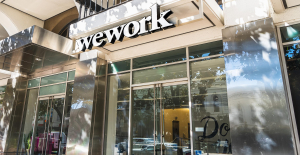 WeWork will close 8 of its 20 shared offices in France
WeWork will close 8 of its 20 shared offices in France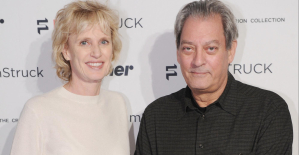 “We were robbed of this dignity”: Paul Auster’s wife denounces the betrayal of a family friend
“We were robbed of this dignity”: Paul Auster’s wife denounces the betrayal of a family friend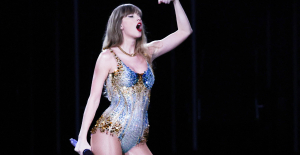 A masterclass for parents to fill in their gaps before Taylor Swift concerts
A masterclass for parents to fill in their gaps before Taylor Swift concerts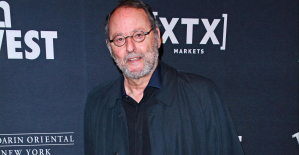 Jean Reno publishes his first novel Emma on May 16
Jean Reno publishes his first novel Emma on May 16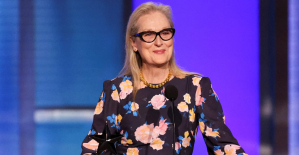 Cannes Film Festival: Meryl Streep awarded an honorary Palme d’Or
Cannes Film Festival: Meryl Streep awarded an honorary Palme d’Or Omoda 7, another Chinese car that could be manufactured in Spain
Omoda 7, another Chinese car that could be manufactured in Spain BYD chooses CA Auto Bank as financial partner in Spain
BYD chooses CA Auto Bank as financial partner in Spain Tesla and Baidu sign key agreement to boost development of autonomous driving
Tesla and Baidu sign key agreement to boost development of autonomous driving Skoda Kodiaq 2024: a 'beast' plug-in hybrid SUV
Skoda Kodiaq 2024: a 'beast' plug-in hybrid SUV The home mortgage firm rises 3.8% in February and the average interest moderates to 3.33%
The home mortgage firm rises 3.8% in February and the average interest moderates to 3.33% This is how housing prices have changed in Spain in the last decade
This is how housing prices have changed in Spain in the last decade The home mortgage firm drops 10% in January and interest soars to 3.46%
The home mortgage firm drops 10% in January and interest soars to 3.46% The jewel of the Rocío de Nagüeles urbanization: a dream villa in Marbella
The jewel of the Rocío de Nagüeles urbanization: a dream villa in Marbella Europeans: a senior official on the National Rally list
Europeans: a senior official on the National Rally list Blockade of Sciences Po: the right denounces a “drift”, the government charges the rebels
Blockade of Sciences Po: the right denounces a “drift”, the government charges the rebels Even on a mission for NATO, the Charles-de-Gaulle remains under French control, Lecornu responds to Mélenchon
Even on a mission for NATO, the Charles-de-Gaulle remains under French control, Lecornu responds to Mélenchon “Deadly Europe”, “economic decline”, immigration… What to remember from Emmanuel Macron’s speech at the Sorbonne
“Deadly Europe”, “economic decline”, immigration… What to remember from Emmanuel Macron’s speech at the Sorbonne These French cities that will boycott the World Cup in Qatar
These French cities that will boycott the World Cup in Qatar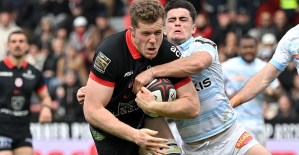 Champions Cup: Toulouse with Flament and Kinghorn against Harlequins, Ramos replacing
Champions Cup: Toulouse with Flament and Kinghorn against Harlequins, Ramos replacing Tennis: still injured in the arm, Alcaraz withdraws from the Masters 1000 in Rome
Tennis: still injured in the arm, Alcaraz withdraws from the Masters 1000 in Rome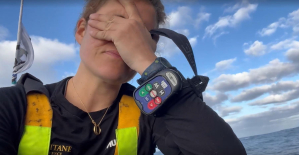 Sailing: “Like a house that threatens to collapse”, Clarisse Crémer exhausted and in tears aboard her damaged boat
Sailing: “Like a house that threatens to collapse”, Clarisse Crémer exhausted and in tears aboard her damaged boat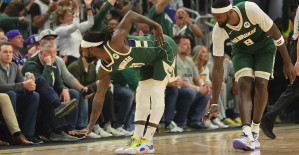 NBA: Patrick Beverley loses his temper and throws balls at Pacers fans
NBA: Patrick Beverley loses his temper and throws balls at Pacers fans


















